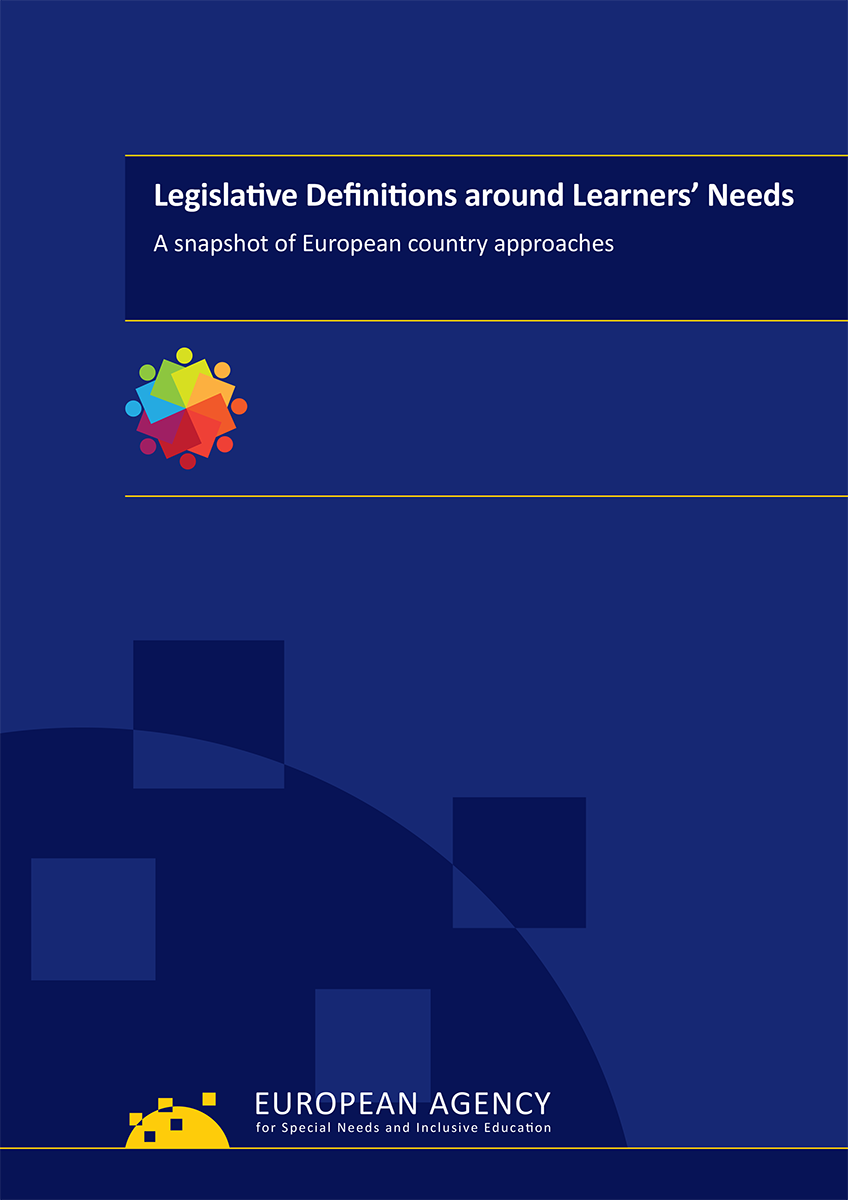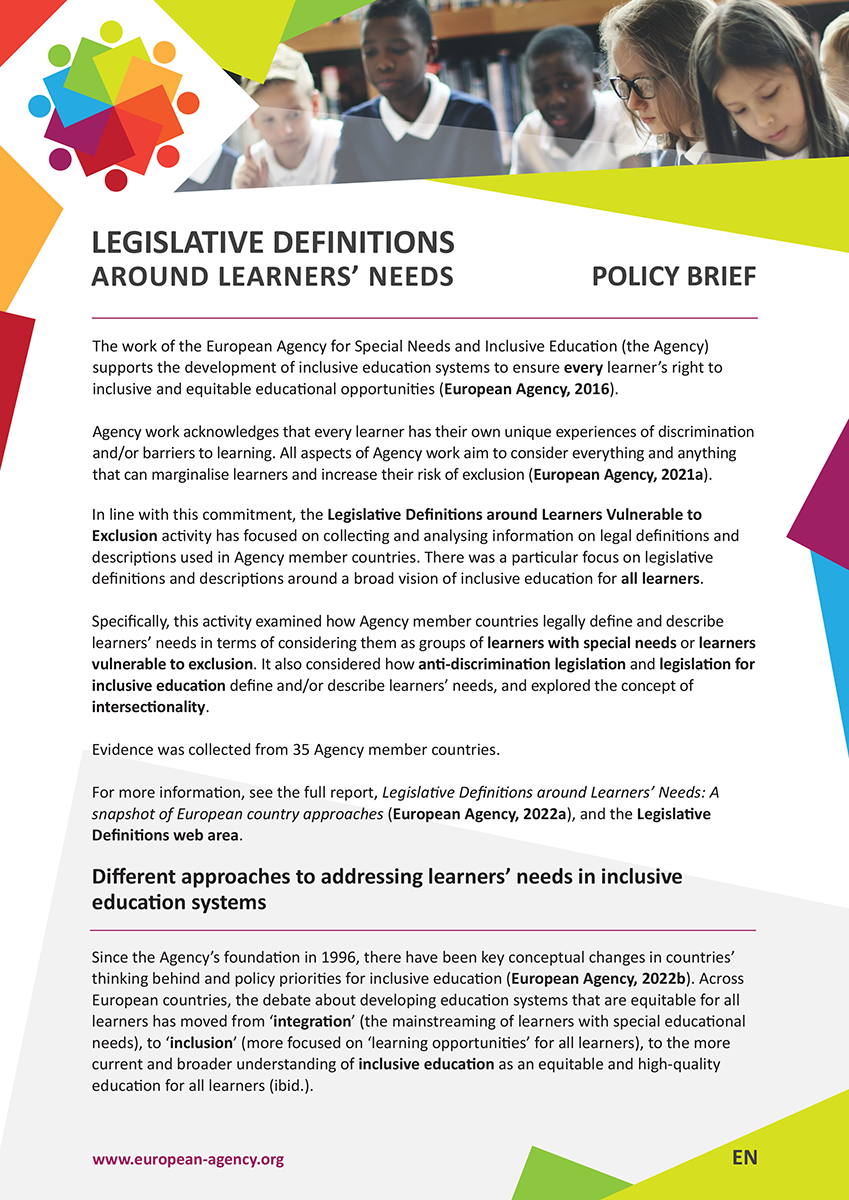All Agency member countries are committed to working towards more inclusive education systems. They do so in different ways, depending on their past and current contexts and histories.
An inclusive approach requires a move away from ‘formal’ assessment and labelling, with separate educational provision for different groups. Central to this commitment and understanding of inclusive education are the legal definitions countries have to identify (and potentially label) learners to make provision available for them.
The Legislative Definitions around Learners Vulnerable to Exclusion desk research activity addressed how Agency member countries legally define concepts around learners who are vulnerable to exclusion. It collected evidence on countries’ current definitions of and approaches to learner groups and risk factors within inclusive education systems.
Activity framework
Agency member countries’ shared ultimate vision for inclusive education systems is that all learners of any age are provided with meaningful, high-quality educational opportunities in their local community, alongside their friends and peers. This vision is the focal point of all Agency work. Inclusive education systems are seen as a vital component within the wider aspiration of more socially inclusive societies that all countries align themselves with, both ethically and politically.
The Agency’s member countries identified the need for Agency work to address the understanding of risk factors for exclusion. The Legislative Definitions activity was a starting point that will contribute to a wider understanding of this issue.
The goal was to provide a snapshot of the current situation within countries and identify trends across countries towards the vision of inclusive education systems.
Work began in autumn 2021 and the final materials were available by the end of 2022.
Participants and target group
This activity covered all Agency member countries. The Agency team compiled initial background reports for each member country. Member country representatives then had the opportunity to provide feedback and approve their respective country reports.
International organisations (e.g. the European Commission) and decision-makers (e.g. Members of the European Parliament) often contact the Agency to enquire about existing national and shared European and/or international definitions of concepts such as special educational needs or available data on learners vulnerable to exclusion. Therefore, they, as well as Agency member countries, are the target group for this activity’s outputs.
Aims
This activity aimed to collect information from Agency member countries focusing on legislative definitions around learners vulnerable to exclusion in education systems.
Specifically, it sought to collect evidence on where countries stand regarding the definition of and approach to learner groups and risk factors within inclusive education systems. The goal was to then identify trends within and across countries in this area.
Activities and outputs
The desk research focused on collecting information from existing Agency publications and documents of legal definitions around learners vulnerable to exclusion. This information was then categorised, and emerging issues were identified.
The activity had five phases:
- Initial research and collection of sources
- Collecting country data on legal definitions and drafting a country report for each Agency member country
- Analysis of results
- Presentation of key findings
- Dissemination of final outputs.
The outputs are as follows:
- An activity report, Legislative Definitions around Learners’ Needs: A snapshot of European country approaches, presenting the outcomes of the Agency’s analysis of its member countries’ legislative definitions.
- A policy brief, setting out findings and key messages in relation to legislative definitions or descriptions in policy around learners’ needs across Agency member countries.
- Individual country reports presenting each member country’s legislative definitions.


